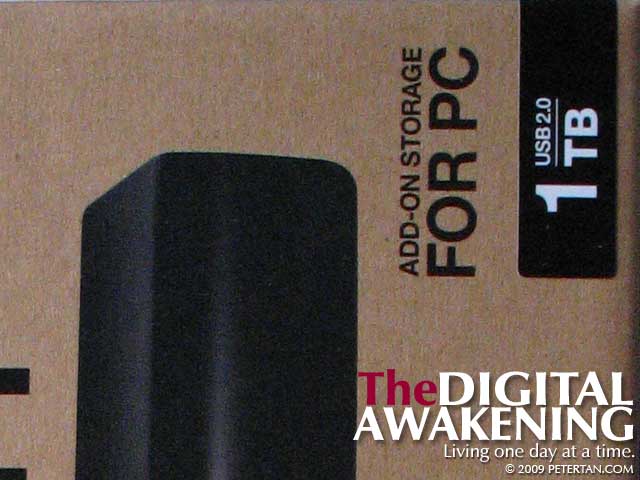
Photography used to be expensive. It cost a bomb to buy and develop films, and then get the images printed. Now, it is still expensive but in different ways. While digital cameras do not need films, there is a need to store those images properly. Contrary to popular beliefs, digital images do not last forever. The integrity of the images are as durable as the media that they are stored in. That includes hard disk drives, thumbdrives, CDs and DVDs. All these have a lifespan.
Between Wuan and I, we have over 100GB of photographs taken over a span of six years. That does not include the scanned images from negatives which may come up to another 50GB. Two years ago, I got a 160GB external drive to store my digital images. Wuan has her own 40GB external drive for the photographs that she took. With that amount of photographs scattered across different drives, it was a chore to look for images that we needed to use.
Last week, while shopping at the All IT Hypermarket at Ikano Power Centre, we came across an offer that was hard to refuse. The Seagate Expansion 1TB external drive was going for RM299 only. I never thought I would need to buy such a large drive. William convinced me that it was best bang for the buck. Moreover, I really wanted to consolidate all the images into one place where it would be easier to look for them.
In the process of backing up the files from my notebook and 160GB external drive to the 1TB drive, I discovered that I had accumulated a lot of junk data, some from ten years ago that I had progressively transferred from one hard disk drive to another. Some were files that I thought I had lost. There was also a lot of data that are duplicates in different folders.
I have been spending the last few days reorganising the folders and files. There is still a lot to be done. I have moved everything out from the 160GB external drive and made it the primary storage for all the images from the Canon Powershot A610 and Nikon D60 which will be periodically backed up to the 1TB drive via Synctoy. Likewise, Wuan’s images in her 40GB drives have been backed up.
The Seagate Expansion 1TB external drive is plugged directly into one of the two USB 2.0 ports of the notebook. The 160GB external drive is plugged into a powered USB 2.0 hub that is plugged into one of the four USB ports of the notebook cooler which is plugged into the other USB port of my notebook. It is all in such a tangled web that I sometimes forget what is plugged into which.
The external drive itself is just a black slab that has quite a large footprint – approximately 5″ by 8″. It has USB 2.0 connectivity and comes with a two-year warranty. The external power adaptor doubles up as the power socket. It comes with a slot for different pin configurations. I used the 3-pin plug. Once the drive is connected to the computer’s USB port it is ready to use. No formatting is required. There is no audible sound when reading or writing. Data transfer ranges from 6.50 MB/sec to 9.50 MB/sec depending on where the various drives are plugged into and how many devices are sharing the same USB ports.
Like William said, it gives the best bang for the buck, and I have to agree. Now Wuan and I do not have to worry about disk space for our photographs. It will be several more years before we need to get another drive to top up the existing one. By then, the drive storage capacity would have grown many times, transfer speed would have quadrupled at least and price per byte would have dropped significantly. Just imagine, I paid RM260 for the 160GB 2.5″ drive plus casing about 18 months ago.


